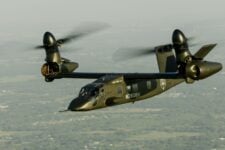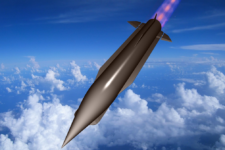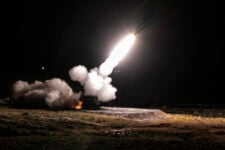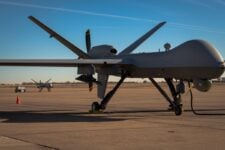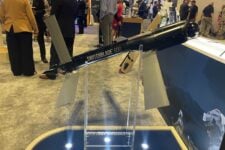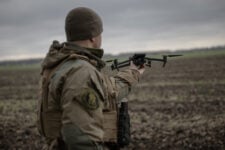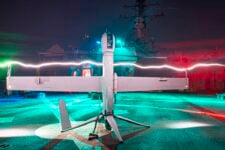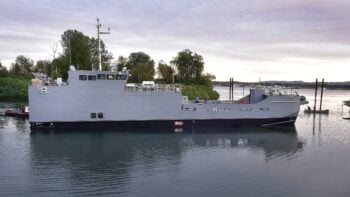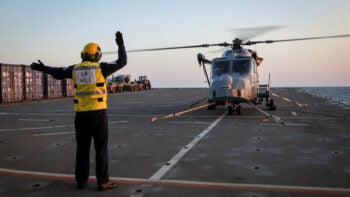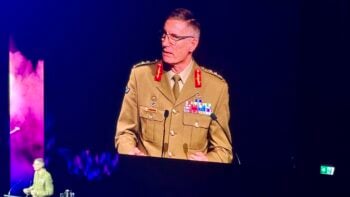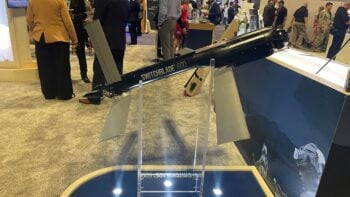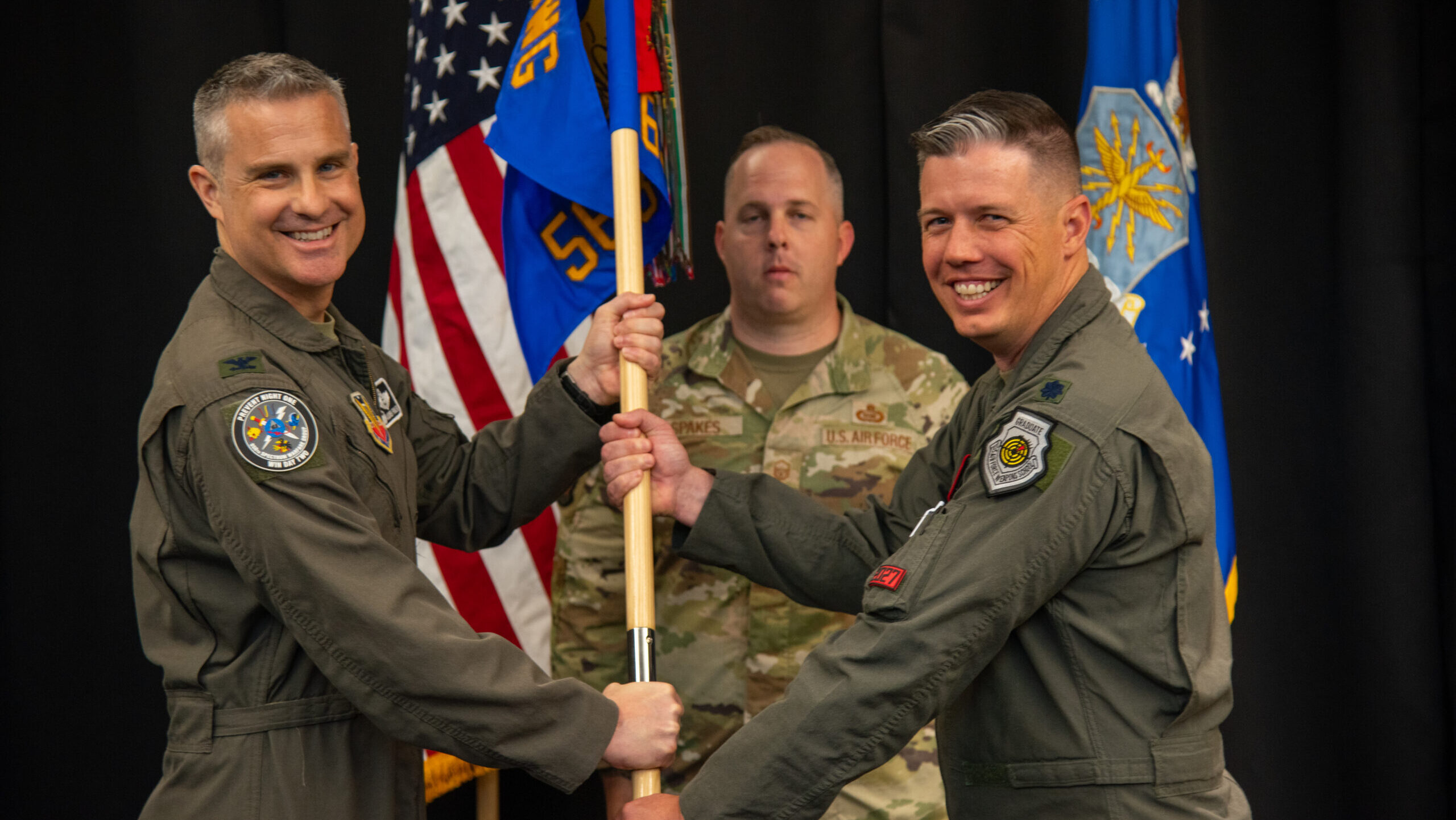
U.S. Air Force Col. Andrew J. Finkler, 850th Spectrum Warfare Group commander, left, and U.S. Air Force Lt. Col. Charles A. Friesz, 563rd Electronic Warfare Squadron commander, pass the guidon for 563rd EWS to signify Friesz’ assumption of command during the unit’s reactivation ceremony, San Antonio, Texas, April 25, 2024. (U.S. Air Force photo by Jarrod M. Vickers)
WASHINGTON — Amid an explosion of electronic warfare (EW) threats around the globe, the Air Force recently moved to activate two squadrons under the service’s 350th Spectrum Warfare Wing — but even with the new squadrons, the wing is still in need of more personnel, its commander said today.
“We do still have a tremendous amount of vacancies,” Col. Joshua Koslov told reporters in a virtual roundtable today. “There’s not a wave of manpower coming to the wing as a result of these standups.”
The two new Electronic Warfare Squadrons (EWS) — the 563rd at Lackland Air Force Base, which was reactivated last week after being shuttered in 2010, and the 388th at Eglin Air Force Base, which will get off the ground tomorrow — can help better structure the 350th SWW by dividing labor more effectively, Koslov explained. For example, there will be some new recruits, but the “bulk” of personnel that will be assigned to the 388th at Eglin will actually come from an existing squadron known as the 39th EWS, whose mission will be refocused to concentrate on “the manipulation, storage and curation of data.”
Koslov said the 350th SWW is primarily charged with three missions: rapid reprogramming, target waveform development and assessment. Broadly speaking, the wing develops tools to wage war on the electromagnetic spectrum, such as jamming enemy weapons or preventing the same effects from impacting US forces.
“We have recognized in our threat analysis that we need these capabilities in our wing in order to make our three wing missions executable,” Koslov said of the arrival of the new squadrons, which follows the activation of two EW detachments at Robins Air Force Base in October. “And so that’s exactly what’s driving it.”
For the 563rd, Koslov observed that “our operational-level tools that we use as a force to plan, integrate, synchronize and collaborate electronic warfare effects are basically non-existent. And so we’re building that capability with this unit.” The unit will also be tasked with “carv[ing] through the mountains of data” that the wing receives on enemy threats to more rapidly field combat capabilities that can defend against them, he said.
Additionally, the squadron will be charged with developing software that ensures the larger 350th SWW can connect to the Pentagon’s effort to link up sensors and shooters around the globe known as Combined Joint All Domain Command and Control (CJADC2), according to Koslov.
Concerning the 388th, its incoming commander Lt. Col. Timothy West said that “as we’re building capabilities, we’re making sure that we are extending the best capabilities downrange … and that the combatant commands have the confidence that what we provide to them will achieve effects in the battlespace.”
The squadron will have “multiple intel teams” that pull together information on enemy threats from partners like the intelligence community, which West said can help determine dangers posed by adversaries like Russia or China. The squadron will figure out what capabilities pose the biggest threats, how they work, and how US and allied forces can defeat them.
The two squadrons will start off small and should grow to about 150 to 200 people in the next couple of years, according to Koslov, who predicted more growth for the 350th SWW. “The wing is very much still a work in progress,” he said.
Last year, Koslov warned that the US was “behind” its rivals when it comes to EW, stressing that more people and better training are needed to catch up. Today he said, “I still think that we’re working towards getting better,” emphasizing the success of recent exercises.
“I’m confident that we’re on the correct glide path towards ultimate success,” he said.

